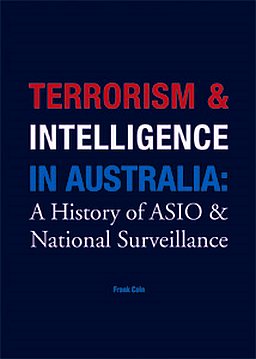A history of ASIO and National Surveillance
Frank Cain
Melbourne: Australian Scholarly Publishing, 2009,
p/b, $39.95. ISBN 978 1 921509 322
Frank Cain was just a name to me but a little googling showed that he is Australia’s leading academic historian of intelligence and security history.
This history of ASIO and its antecedents – more or less equivalent to the UK’s MI5 – shows what you might have expected: the spooks were allied with the conservatives, persecuted the left, hunted reds, real and imaginary (mostly imaginary) and kowtowed to the Americans. They had no interest in the Nazis being resettled in Australia after WW2, and were barely interested in Croatian terrorists in Australia even when they began launching raids on Yugoslavia. ASIO was almost a parody of the right-wing security/intelligence outfit in bed with the right.
The author’s account also shows a Labour Party dimly aware of all this, making the occasional half-hearted stab at reining in ASIO, which the agency and its conservative allies easily outflanked or overturned.
Cain’s account has the familiar virtues and the faults of academic writing on these subjects. On the plus side it is solid and reliable. On the negative side, because of the author’s reluctance to stray much beyond official history – reports, parliamentary bills, legislative changes, occasional events in parliament when the spooks’ activities arose there – even someone with as little knowledge about the subject as me can see that some of the story is missing.
It’s not that the author is afraid of making political comments. He is properly scathing about the events surrounding the Australian support for the invasion of Iraq and the persecution of the lone Australian intelligence analyst willing to say that the emperor had no clothes on; and he writes this for example on p. 238:
‘Australia has fought in many regional war in recent years, but the conjoining of the military and intelligence agencies did not occur to the same extent when faced with these previous enemies. It was ironic that the combined intelligence/military operation was not mobilised until Australia was faced with the arrival of the battered battalions of asylum-seekers. The truth was that it was not so much a combined intelligence/military operation as a cynical dress rehearsal for victory at the forthcoming federal elections’.
It’s just that there is a certain (arguably proper) academic caution which inhibits. But I am probably being unduly picky. This is a far better and more complete version of Australia’s political police than we have had from any British academic looking at our MI5. For example, his account of the dismissal of the Whitlam government, though cautious by the standards of the Australian left, does refer to the role of the CIA in funding the opposition parties and leaning on ASIO.(1) Will the academic version of MI5 for this period (should there ever be one) be as forthcoming about ‘the Wilson plots’?
Notes
- A decent recent summary of those events, ‘The Hidden Australia – a secret recent History of the Whitlam Dismissal’, is available at
<www.kooriweb.org/foley/resources/history/whitlam_coup.html>.
